- 765-286-7154
- sales@spencenursery.com
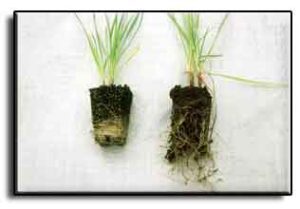
When purchasing native plants, healthy plant roots should be the primary consideration. Notice the striking difference in the roots system of the Nodding Wild Onion (Allium cernuum) grown in our 2 3/8” square by 3 ¾” deep open-bottomed pot (right) compared with a plug of the same species grown in a 2 ¼” pot (left). The roots are obviously concentrated at the bottom of the pot on the left. This dense mass of tightly wound roots results in a reduction in vigor and ability to establish following transplanting.
In contrast, the plant from Spence Restoration Nursery has a loose root system, spread more evenly throughout the container. Our plant will quickly root into the surrounding soil following transplanting, resulting in rapid establishment and much improved survival.
Because our open-bottomed pots are straight-sided rather than tapered, they contain between 1.2 and 2 times the soil and root volume as other containers marketed as 2” pots.
Establishment of a diverse native plant community require the presence of diverse mycorrhizal fungi network. Healthy plant communities contain many fungal species that inhabit the roots of the plants in a symbiotic relationship, providing a variety of benefits. Among these benefits are increased ability to absorbs water, better nutrient intake, and improved ability to compete with weeds that grow well without mycorrhizal fungi. When soil has been radically disturbed by construction, mining, or agriculture, this fungi network is usually destroyed. Re-establishment of the mycorrhizal community is essential to restoration of a diverse, stable native plant community.
At Spence Restoration Nursery, we inoculate all of our plant with a VAM (Vesicular Arbuscular Mycorrhizal) cocktail from Plant Health Care. Unlike ecto-mycorrhizal fungi used on trees, VAM grows inside of the plants roots and is not visible to the naked eye.
This inoculant contains a cocktail of endo-mycorrhizal fungi species that inhabit the plant roots. We thoroughly mix this granular inoculant with our container mix , ensuring excellent contact with the developing root system. Beware of “inoculated”plants that were treated by spraying the inoculant over the top, as this is an ineffective method of distributing the poorly soluble VAM spores. For further information on mycorrhizal fungi, visit Plant Health Care.
As seen in the pictures , both wetland and upland plants from Spence Restoration Nursery establish quickly, usually maturing in the first growing season.
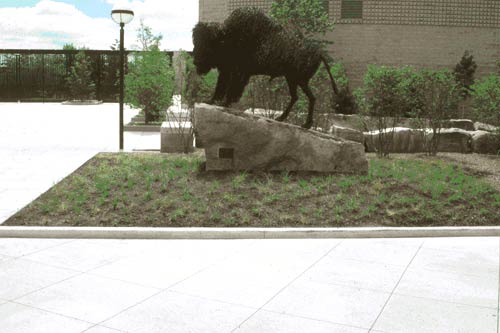
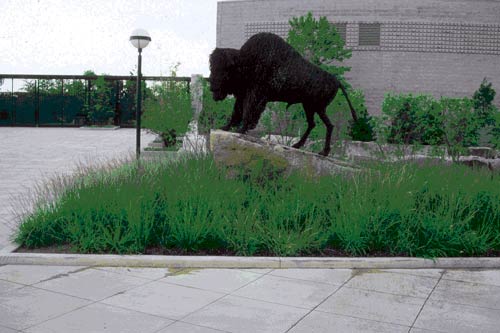
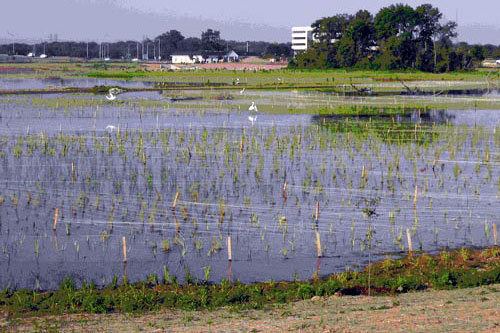
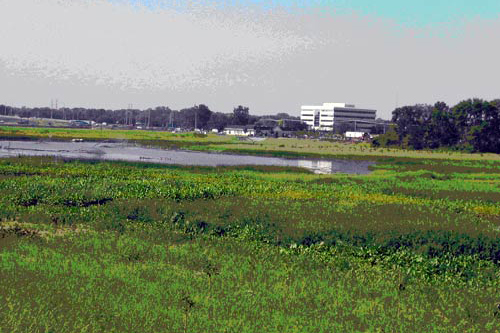
To insure success in your restoration projects, be sure to specify mycorrhizal inoculated plants grown in 2 3/8” square by 3 ¾” deep open-bottomed pots as provided by Spence Restoration Nursery.